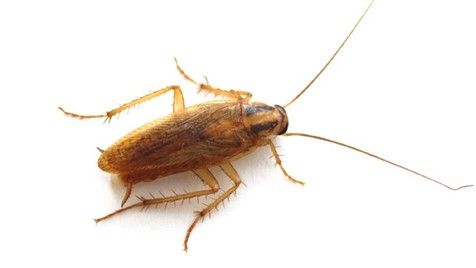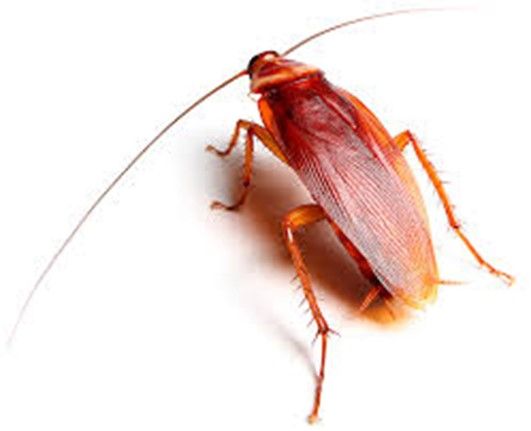1) German cockroach

Fig 1. German cockroach
This is the most important species of cockroach in restaurants. It is about 12 mm to 17 mm long as an adult. Nymphs and adults of both sexes have two dark stripes behind the head. The German cockroach prefers to live in kitchens and bathrooms of homes and apartments, restaurants, supermarkets, and hospitals.
Common Name: German cockroach
Scientific Name: Blattella germanica
Habitat: This cockroach lives indoors in close association with people. It prefers to live in kitchens and bathrooms of homes and apartments, restaurants, supermarkets and hospitals.
Biology and Behavior: This is the most important species of cockroach in the urban pest management. Nymphs and adults of both sexes have two dark stripes behind the head. Males have a cigar-shaped abdomen, while the females are more rounded. The Asian cockroach, Blattella asahinai, is very similar to the German cockroach but lives outdoors in lawns and leaf litter. The German cockroach is a bit more reddish and cannot fly; the Asian cockroach is grayish and can fly. The average German cockroach lifecycle is 103 days. Females have 30 to 40 eggs per ootheca.
2) American cockroach

Fig. 2 American cockroach
This cockroach is about 38 mm long as an adult. It is reddish-brown with light markings behind the head. The cerci at the tip of the abdomen are long and thin. The American cockroach is commonly found in sewers and basements.
Common Name: American cockroach
Scientific Name: Periplaneta americana
Habitat: This cockroach is associated with moist areas and is commonly found in sewers and basements. It is also commonly found in homes, factories, hospitals and zoos.
Biology and Behavior: This cockroach is reddish-brown with light markings behind the head. The cerci at the tip of the abdomen are long and thin. The American cockroach male has two shorter stylets to the inside of the cerci, while the female only has one pair of cerci. This cockroach has pads on its feet and legs that are susceptible to pesticide uptake. The average egg to adult development is 600 days. Females have 14 to 16 eggs per ootheca.
